This Japanese-Style Tuna Mushroom Pasta is full of flavors and incredibly easy to make! With pantry staples like butter, canned seafood and a bottle of Mentsuyu (Japanese noodle soup base), you can instantly make delicious pasta for a low-lift weeknight dinner.
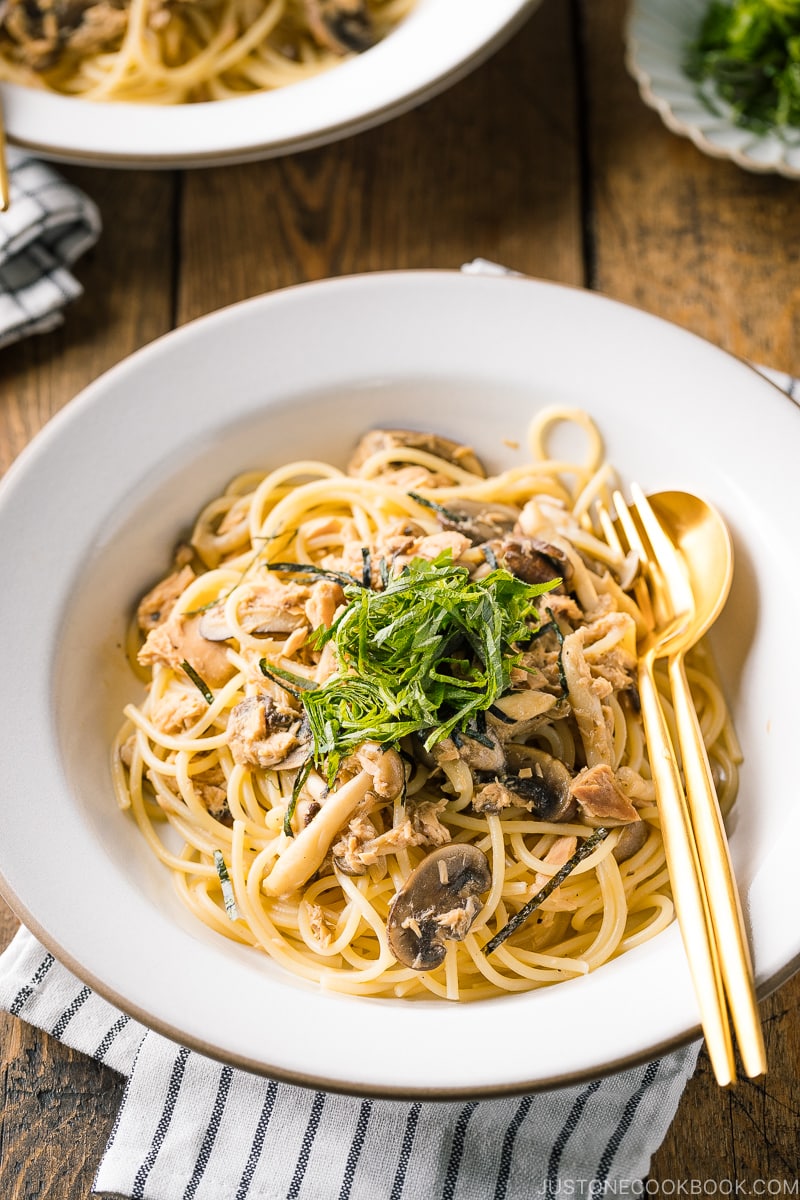
There are plenty of reasons why pasta is so universally loved. Even for the Japanese home cooks, pasta are the holy grail of time-saving, pantry-friendly, kid-friendly, low-fuss kind of meals.
Need a quick dinner? Raid your pantry for some kind of pasta, canned fish, bottled seasoning, and you can rustle up a flavorful meal like this Japanese-style Tuna Mushroom Pasta (ツナときのこのパスタ) in no time. What a life saver on busy nights!
Effortless Japanese-style Pasta with Pantry Staples
Whenever I make a Japanese-style pasta, I often turn to my Japanese pantry staples. It is as simple as combining soy sauce with butter to create a Japanese flair for whatever pasta I can find. Other ingredients can be local, in-season vegetables, canned or fresh seafood or bacon or tofu or mushroom. As far as the variety goes, the sky is the limit!
For a flavor boost, I may add a spoonful of miso. For nuttiness, a drizzle of sesame oil does the trick. For final Japanese touches, a sprinkle of shredded nori or furikake seasoning or a scatter of julienned shiso leaves is always welcome.
By keeping things flexible and minimal, these pantry essentials allow me to make a satisfying pasta dinner with little to no effort.
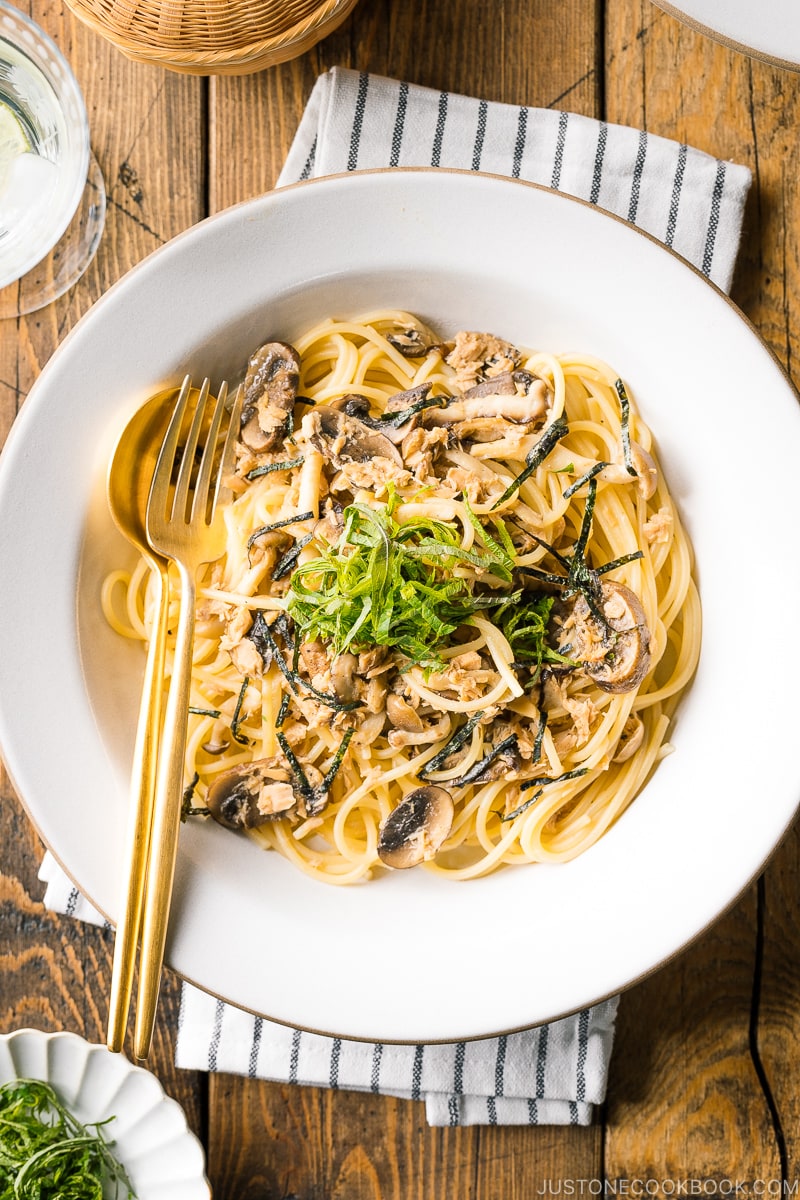
How to Make Japanese Style Tuna Mushroom Pasta
Ingredients You’ll Need
- Japanese mushrooms of your choice – I highly recommend using Japanese mushrooms like shiitake, shimeji, maitake, enoki mushrooms, etc.
- Canned tuna – Not only it is a convenient, great pantry item, but it also adds great flavors. Not a fan of tuna? Swap it with other protein or more meaty mushrooms like portobello or king oyster mushrooms.
- Kobucha (Kombu-cha) – This salted powdered kombu adds saltiness and umami kombu essence to the pasta. It’s sold in the tea section of the Japanese grocery stores. It can be substituted with salt if you can’t find one.
- Sake – You can use white wine (dry sherry)
- Mentsuyu (or soy sauce) – Mentsuyu is a noodle soup base we use in Japanese cooking. You can make it yourself or just buy a bottle of mentsuyu at Japanese/Asian grocery stores.
- Butter – It adds sweetness, creaminess, and fragrance, but also a sublime match with soy sauce and mentsuyu.
- Shredded nori seaweed – You can buy shredded nori or cut a sheet of nori into julienned strips yourself.
- Shiso leaves – I love adding shiso to Japanese-style pasta. If it’s hard to get, you can use scallions or other green herbs or grow your own!
Overview of Cooking Steps
- Start boiling pasta water while you prep all the ingredients.
- While cooking pasta, saute mushrooms and tuna. Season the ingredients.
- Toss everything together with cooked pasta.
That’s it!
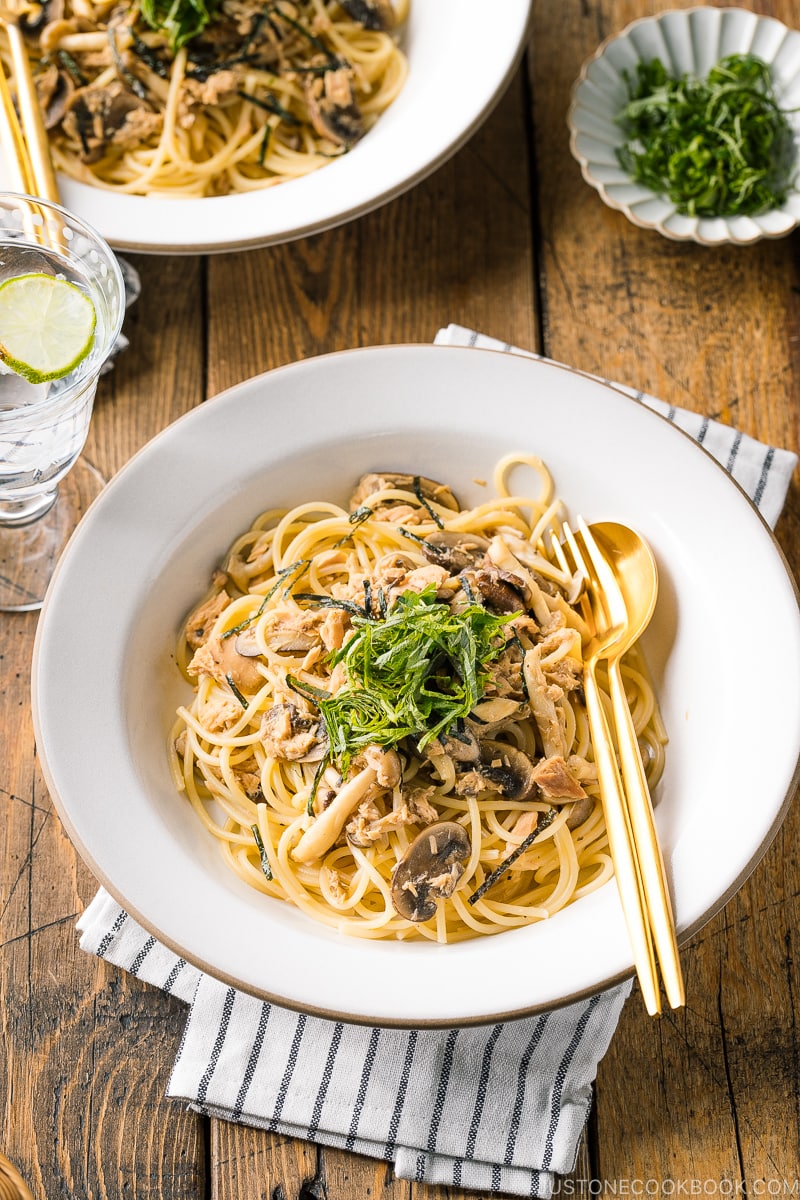
3 Important Tips to Make Good Pasta
- Salt your pasta cooking water – Salt increases the boiling point of the water, so it will cook at the optimal temperature.
- Cook pasta to al dente – Since we’ll be sautéing the cooked pasta in the frying pan with the other ingredients, I typically cook pasta one minute less for best texture.
- Reserve at least 1/4 cup (60 ml) of pasta cooking water – The salted pasta cooking water helps loosening the pasta, and adding extra flavor and moisture to the pasta sauce.
You can complete this Japanese Style Tuna Mushroom Pasta with Japanese corn soup (corn potage), kale soup, or miso soup, and a side of simple salad.
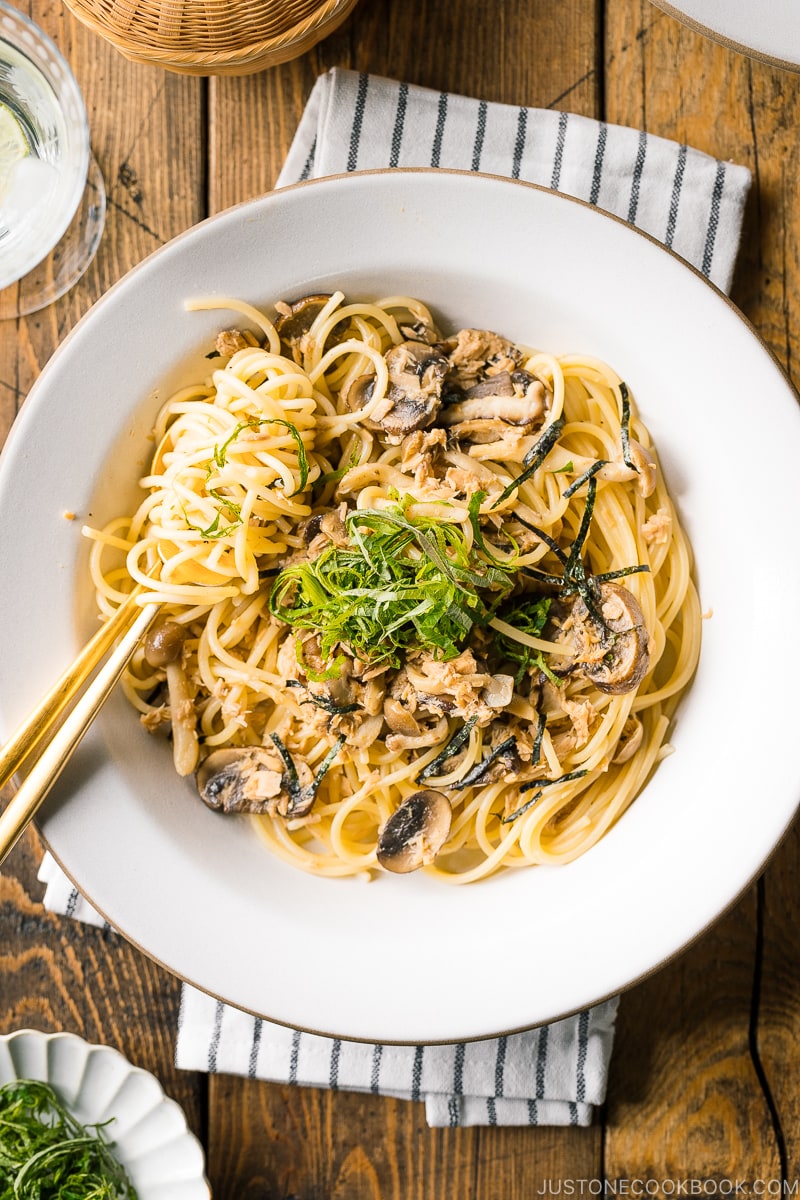
Other Quick Japanese-Style Pasta Recipes You’ll Love:
- Japanese-style Pasta with Shrimp and Broccolini
- Creamy Napa Cabbage and Bacon Pasta
- Ume Shiso Pasta
- Miso Butter Pasta with Tuna and Cabbage
- Creamy Miso Pasta with Tofu and Asparagus
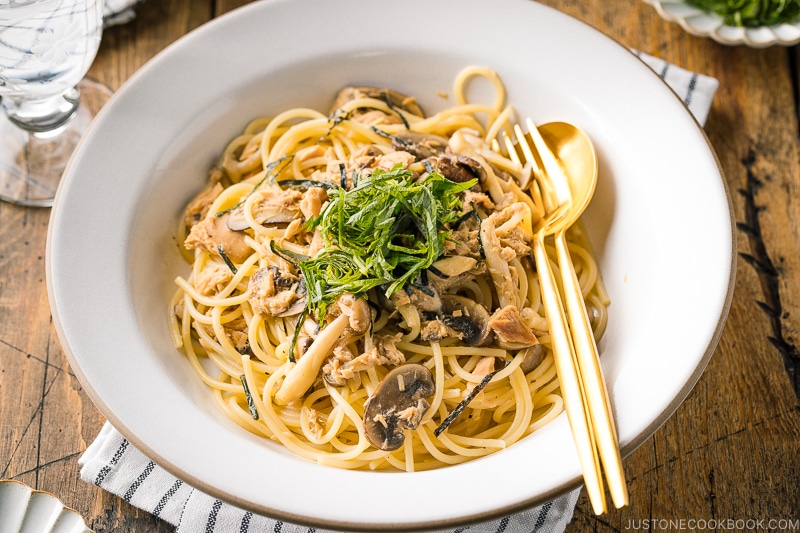
Wish to learn more about Japanese cooking? Sign up for our free newsletter to receive cooking tips & recipe updates! And stay in touch with me on Facebook, Pinterest, YouTube, and Instagram.
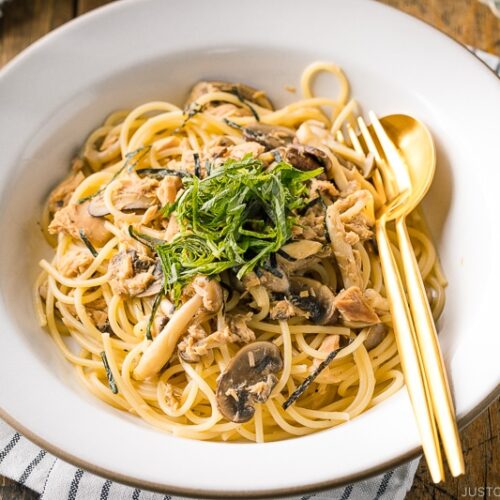
Japanese style Mushroom & Tuna Pasta
Ingredients
- 1.8 oz shimeji mushrooms (½ package; or use other types of mushrooms)
- 3 shiitake mushrooms (or other types of mushrooms)
- 3 cremini mushrooms
- 1 (5-ounce) can albacore tuna (preferably packed in olive oil) (142 g; drained)
- 8 oz spaghetti (4 oz, 113 g per person)
- 1½ Tbsp Diamond Crystal kosher salt (for cooking the pasta)
- 1 Tbsp extra virgin olive oil
For the Sauce
- ⅛ tsp freshly ground black pepper
- 1 tsp kobucha (kombucha) (or substitute with ¼ tsp kosher salt; This is not kombucha, the fermented drink. This powdered "tea" is made from kombu seaweed)
- 2 Tbsp sake
- 2 Tbsp mentsuyu (concentrated noodle soup base) (concentrated; you can make my Homemade Mentsuyu recipe; please adjust the amount based on your mentsuyu brand; or substitute 1½ Tbsp soy sauce)
- 1 Tbsp unsalted butter
For the Garnish
Instructions
- Gather all the ingredients.

Prepare the Ingredients
- Discard the bottom of 1.8 oz shimeji mushrooms and separate them.

- Discard the stems of 3 shiitake mushrooms and cut the caps into slices.

- Discard the bottom of 3 cremini mushrooms and cut the caps into slices. Combine all the mushrooms on a plate/tray.

- Roll up 6 shiso leaves (perilla/ooba) and cut them into julienned strips.

- Open 1 (5-ounce) can albacore tuna (preferably packed in olive oil) and press the lid down to drain off the excess oil. Boil 4 QT (16 cups, 3.8 L) water in a large pot. Once boiling, add 1½ Tbsp salt.

To Cook
- Cook 8 oz spaghetti 1 minute less than the package instructions (you will cook a bit more with the sauce). You should be able to finish the following step before the pasta is done cooking. If your pasta is done cooking first, reserve 4 Tbsp (60 ml) of pasta cooking water, drain, and set aside.

- In a large frying pan, heat 1 Tbsp extra virgin olive oil on medium heat and add all of the mushrooms.

- Sauté for 30–60 seconds to coat the mushrooms with oil, and then add the canned tuna.

- Season with ⅛ tsp freshly ground black pepper and 1 tsp kobucha (kombucha) (or kosher salt).

- Add 2 Tbsp sake, 2 Tbsp mentsuyu (concentrated noodle soup base), and 1 Tbsp unsalted butter and mix all together.

- Reserve 4 Tbsp (¼ cup, 60 ml) of pasta cooking water and add to the pasta sauce.

- Taste the sauce and adjust if needed. At this stage, the sauce should have a strong flavorful taste, not bland. If your pasta is not done cooking, turn off the heat and cover so the pasta sauce will not evaporate.

- Drain the pasta into a colander OR scoop the pasta from the pot. Add the pasta to the sauce. Toss the sauce and pasta well.

- Transfer the pasta to individual plates and garnish with 1 Tbsp shredded nori seaweed (kizami nori) and the shiso leaves.

To Store
- You can keep the leftovers in an airtight container and store in the refrigerator for up to 2 days or in the freezer for a month.
Nutrition
Editor’s Note: This post was originally published on June 24, 2011. The images and post content have been updated in May 2021.
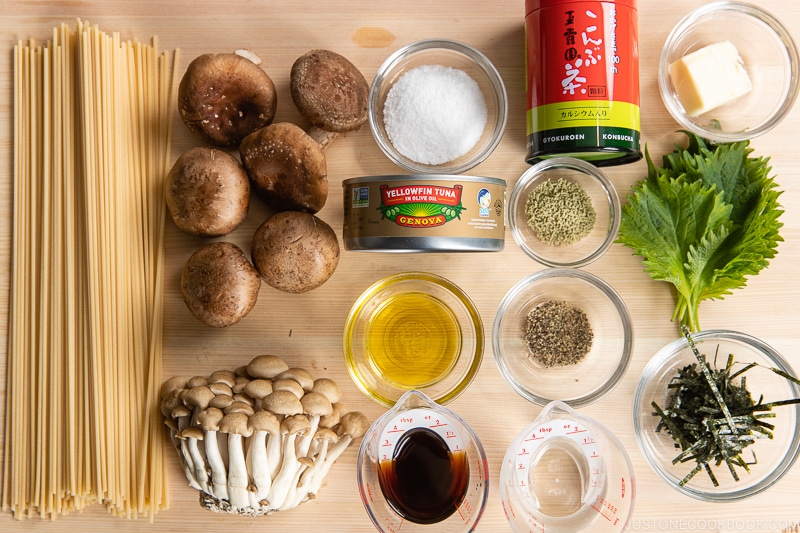
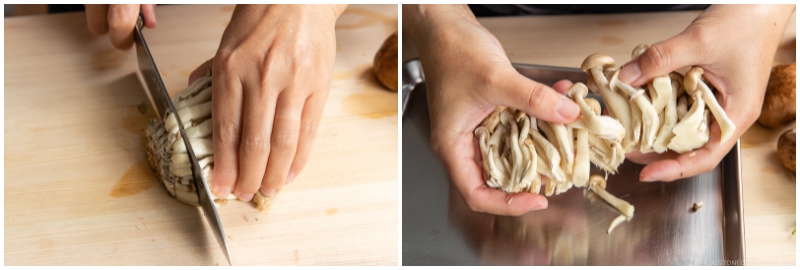
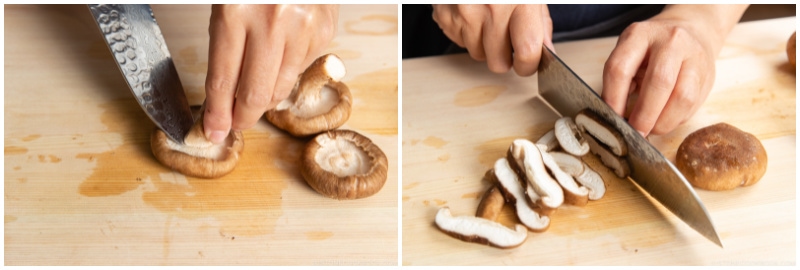
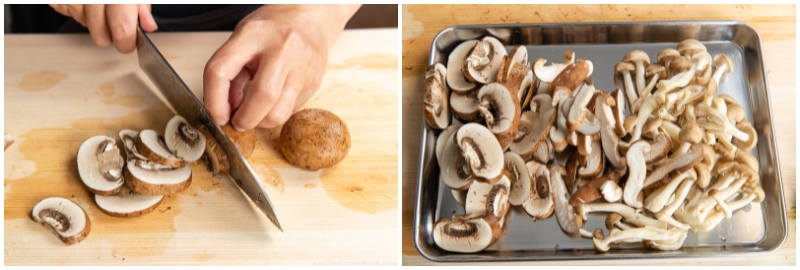
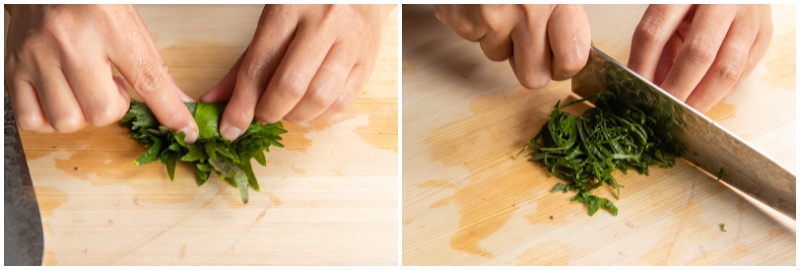
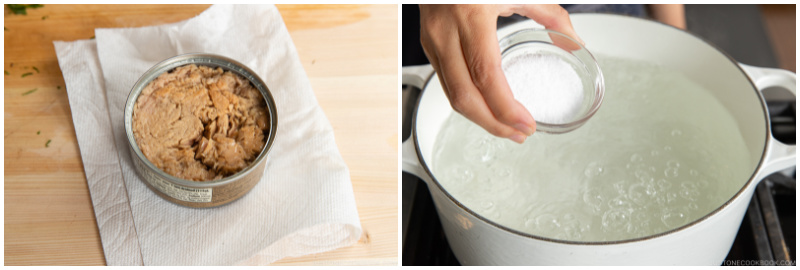
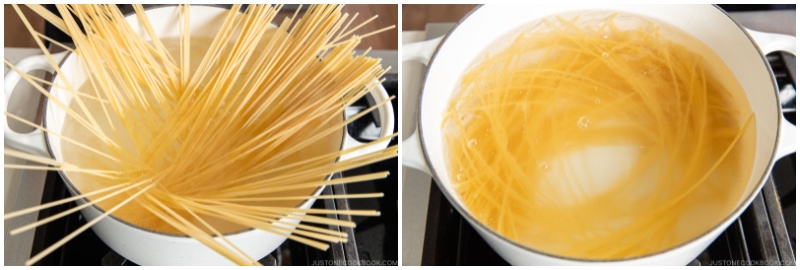
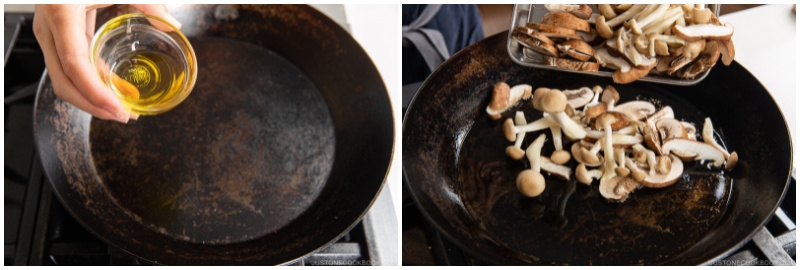
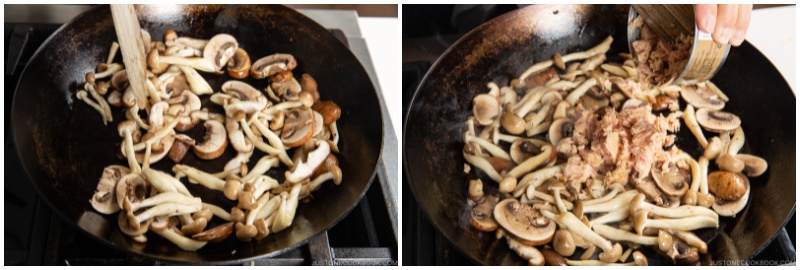
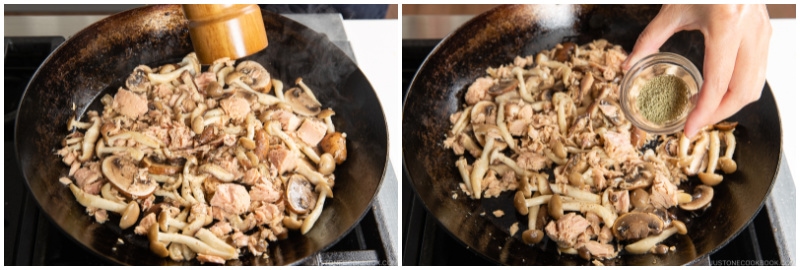
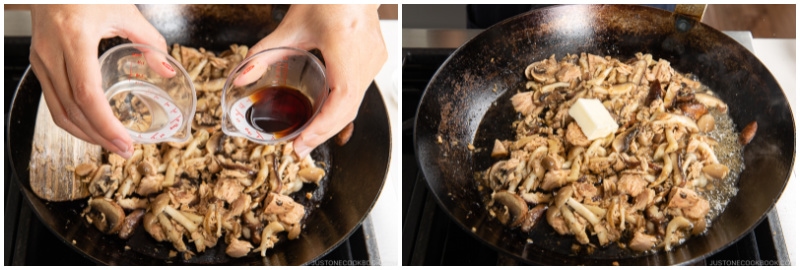
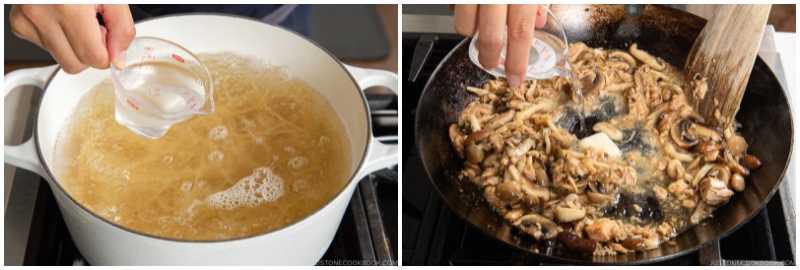













This dish looks amazing! I see a lot of Japanese pasta use spaghetti, have you ever tried other pasta shapes? Does it change the texture or cooking process?
Hi Li, Thank you so much for taking the time to read Nami’s post and try her recipe.
Yes, you may use different kinds of pasta and follow Nami’s instructions. However, the texture of the dish will vary depending on the texture of the pasta.
We hope this was helpful!
OMG! This is so yummy!! I love this recipe so much. 🙂
Hi Jean! We are so happy to hear you enjoyed Japanese-style Tuna Mushroom Pasta!
Thank you very much for trying Nami’s recipe and for your kind feedback. 😊
Happy Cooking!
its simple but incredible delicious. thank you Naomi, I dont have shiso so I used thai basil, not the best but it was okay.
Hi Stephanie! Nami and JOC team are so happy to hear you enjoyed this dish!
Thank you very much for trying Nami’s recipe and for your kind feedback!😊
Arrrgggh I forgot the sake even though I have some sitting in the fridge! But I had everything else and it turned out delicious! Will be making it again with the sake. I’ve always liked shiso and it added a really nice touch to the dish. Happy new year to Namiko and the JOC team!
Happy New year, Enid! 🎉
Thank you very much for trying Nami’s recipe and for your kind feedback! We are so happy to hear you enjoyed Japanese-style Pasta!
I had nearly everything for this dish save the kobucha, shisho, and cremini mushrooms so I substituted a few pieces of broken kombu (i eventually removed them) and some enoki mushrooms. Lastly I added some frozen corn kernels for a slight crunch. Overall it was a very umami dish and slightly sweet (from the mentsuyu and corn) , loved it! The nori and perilla complement it perfectly. I will have to try with kobucha, shisho, and cremini mushrooms next time! Thank you!
Hi Brenda, We love your pasta photo!🤩 It looks yummy!
Thank you very much for trying Nami’s recipe and sharing your cooking experience with us!
Happy cooking!
Hi, I had alot of mushrooms and was looking for a recipe and I stumbled upon this recipe. IT was delicious. Thanks
Hi Yvonne! Awesome! We are so happy to hear you enjoyed this pasta!
Thank you very much for trying Nami’s recipe and for your kind feedback!
Hello, I stumbled upon this recipe and it looks simple and delicious! Do you think it would be okay to substitute mushrooms with other vegetables? I’m thinking of adding yellow squash and broccoli instead.
Hi Mio! Thank you very much for reading Nami’s post!
It is okay to use other vegetables and would be tasty, but the flavor and texture of this dish will be a little different.
We hope this helps!
I haven’t tried this yet but will have to use parsley. I have planted Shiso in my herb box but it is just started
Hi Barbara! Awesome! Soon, you will enjoy many Shiso recipes with homegrown Shiso! Exciting! 🤩
Thank you for trying Nami’s recipe!
I made this tonight for dinner and even though I substituted the mentsuyu with soy sauce and didn’t add the garnishes, it turned out to be delicious! It requires very little preparation, is very versatile as you can use any kind of mushrooms, and the sauce can be made within the boiling time required for the pasta so it’s perfect for a quick meal. I’ll definitely make this again but will use less soy sauce.
By the way, my pasta sauce wasn’t saucy at all even though I added a fair bit of pasta water. It was more like a dry pasta. Just wondering, is it meant to be a saucy or dry pasta?
Hi Jessica, Thank you very much for trying this recipe and for your kind feedback! We are glad to hear you enjoyed this Pasta.
This pasta is more like dry pasta. If you would like to make it more on the saucy side, we recommend adding pasta water and adding extra olive oil and butter with other seasonings as you like. We hope this helps!
[…] Mushroom Tuna Pasta […]
[…] Mushroom and Tuna Japanese Style Pasta […]
Hi Nami! I really want to try this recipe. I am wondering though about the mentsuyu. Is the 4 tablespoons for the straight type or the dilute type? Thank you!
Hi Wendy! Good question, this particular one is dilute type, considering it’s 4 Tbsp. I usually use straight type from the store-bought bottle or my homemade recipe. I’ll mention in my recipe. Thanks for letting me now!
What I like about this pasta is it is light and tasty. Not too oily so there is little guilt for a great taste! 🙂
I agree with you Alana! I love the simplicity of this dish. 🙂